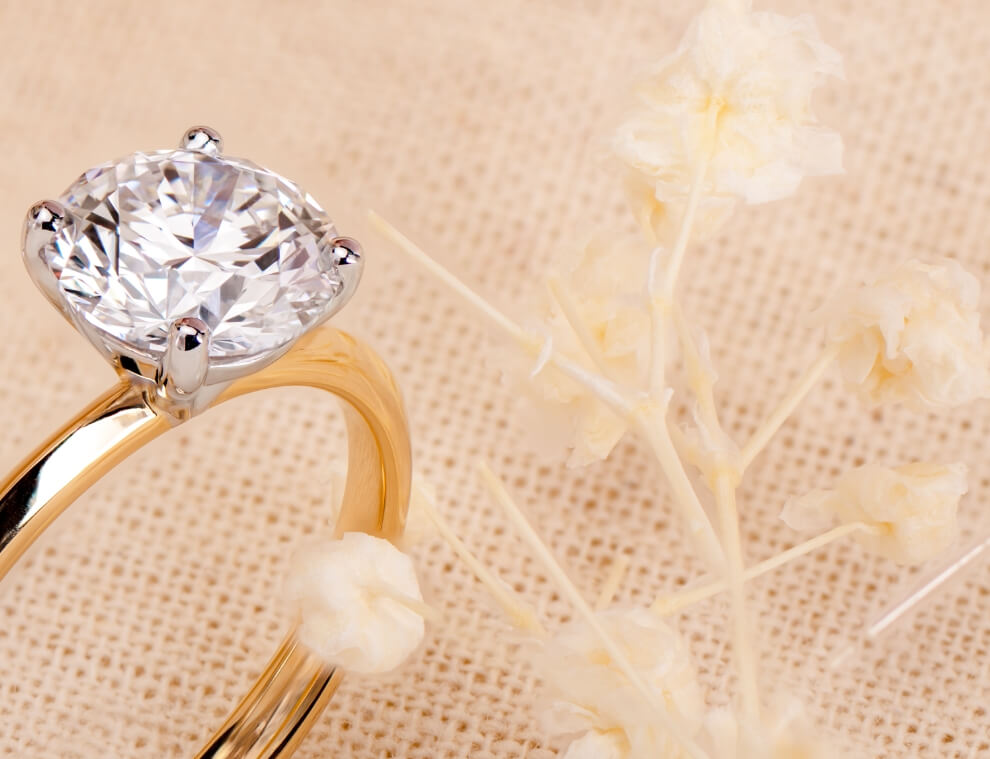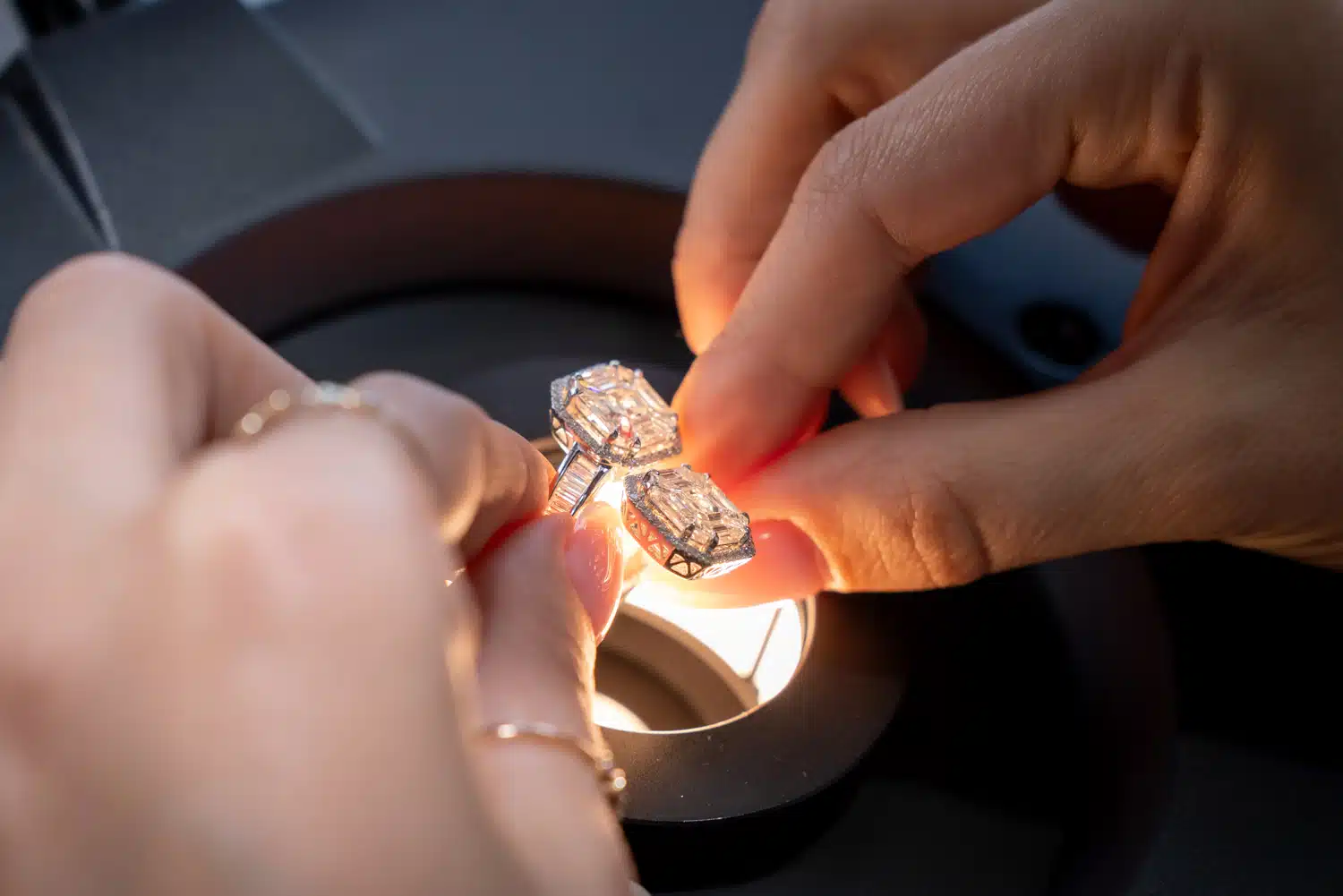When it comes to purchasing a diamond, whether it’s a natural or a lab-grown diamond, understanding the 4Cs—cut, color, clarity, and carat weight—is essential. For lab diamonds, the 4Cs are just as crucial in determining the stone’s quality and value. As lab diamonds gain popularity as an ethical and affordable alternative to mined diamonds, it’s important to learn how the 4Cs apply to these stones. This article will explain each of the 4Cs in the context of lab diamonds, helping you make an informed decision when choosing your perfect gem.
What Are Lab Diamonds 4Cs?
The 4Cs of diamonds—cut, color, clarity, and carat weight—are the primary factors that influence a diamond’s appearance, quality, and value. These characteristics remain the same for both mined and lab-grown diamonds. However, the main difference lies in how the diamonds are produced. Lab diamonds are created in a controlled environment that mimics the natural conditions that form diamonds deep within the Earth. Despite their origin, the 4Cs are evaluated the same way for lab diamonds as they are for natural diamonds, ensuring consistency in how their quality is assessed.
Understanding the lab diamonds 4Cs will help you understand what you are purchasing and why certain diamonds are priced higher than others. Each “C” plays an important role in determining the overall beauty and worth of a diamond, so it’s crucial to consider all four factors when shopping for a lab diamond.
Lab Diamonds 4Cs: The Importance of Cut
The cut of a diamond is perhaps the most important factor when evaluating lab diamonds 4Cs. It refers to how well the diamond has been shaped and faceted to maximize its brilliance and sparkle. A well-cut diamond reflects light in such a way that it dazzles and shines, while a poorly cut diamond may appear dull and lifeless, even if it has excellent color and clarity.
When examining the cut of lab diamonds, jewelers look at several factors, including proportions, symmetry, and polish. The ideal cut ensures that light enters the diamond and is refracted back through the top, creating that signature sparkle. Lab diamonds, like their natural counterparts, are graded on a scale ranging from Excellent to Poor, with Excellent being the most desirable. A high-quality cut can significantly enhance the overall appearance of a lab diamond, making it a top consideration when shopping.
Lab Diamonds 4Cs: Understanding Color
The color of a diamond is another key component in the lab diamonds 4Cs. While diamonds come in a range of colors, the most valued diamonds are colorless or near colorless. The Gemological Institute of America (GIA) grades diamonds on a scale from D (colorless) to Z (light yellow or brown). The less color present in a diamond, the higher its quality and value.
Lab diamonds, like mined diamonds, are also graded on the GIA color scale. However, one of the benefits of lab-grown diamonds is that they can often be more consistent in color compared to natural diamonds. This is because lab diamonds are produced in a controlled environment where the conditions are closely monitored. As a result, lab diamonds may exhibit fewer variations in color, which can be an advantage for those seeking a specific shade.
When considering the lab diamonds 4Cs, color plays a major role in determining the diamond’s aesthetic appeal. Most buyers prefer diamonds that fall within the D to G range, as these stones appear bright and white, without any noticeable yellow or brown undertones.
Lab Diamonds 4Cs: The Role of Clarity
Clarity refers to the presence of internal or external imperfections known as inclusions and blemishes. Inclusions are tiny marks inside the diamond, while blemishes are surface imperfections. The clarity of a diamond is determined by how many, how large, and how noticeable these imperfections are. Lab diamonds, like mined diamonds, are graded for clarity on a scale that ranges from Flawless (FL) to Included (I3), with higher-quality diamonds being more valuable.
In the context of lab diamonds 4Cs, clarity is particularly important because, unlike natural diamonds, lab-grown diamonds may have fewer inclusions. This is because the controlled conditions under which lab diamonds are created often result in fewer internal flaws. Many lab-grown diamonds are graded as VS1 or VS2 (Very Slightly Included), which means they have minor inclusions that are difficult to detect without magnification. This makes lab diamonds an excellent option for buyers who prioritize clarity but want a more affordable alternative to high-clarity natural diamonds.
Lab Diamonds 4Cs: Carat Weight and Size
Carat weight is perhaps the most straightforward of the lab diamonds 4Cs. It refers to the weight of the diamond, with one carat equaling 0.2 grams. Larger diamonds are generally more expensive, but carat weight alone doesn’t determine the overall value of a diamond. For example, a smaller diamond with an excellent cut may have more brilliance than a larger diamond with a poor cut. When comparing lab diamonds, it’s important to look at all the 4Cs to evaluate the diamond’s overall quality.
While carat weight affects the price of a lab diamond, it’s essential to understand that lab diamonds are often less expensive than mined diamonds of the same carat weight. This is due to the fact that lab grown diamonds are more readily available and do not require the extensive mining process. As a result, you may be able to purchase a larger lab diamond for the same price as a smaller natural diamond, making carat weight a more accessible factor for many buyers.
How Lab Diamonds 4Cs Affect Value and Cost
When evaluating lab diamonds 4Cs, it’s important to keep in mind that all four factors contribute to the diamond’s overall value and price. A high-quality lab diamond with an excellent cut, near-colorless color, high clarity, and a larger carat weight will command a higher price. However, lab diamonds are generally more affordable than their mined counterparts, allowing buyers to prioritize certain aspects of the 4Cs without the same financial strain.
For example, if you prefer a larger diamond but are on a budget, you might choose a lab-grown diamond with a slightly lower clarity or color grade while still getting the size you want. Alternatively, if brilliance is your top priority, you may prioritize cut over size, as the cut has a significant impact on how the diamond sparkles. By understanding the lab diamonds 4Cs, you can find the perfect balance between quality, size, and cost.
Conclusion: Choosing the Perfect Lab Diamond
When shopping for a lab diamond, understanding the 4Cs—cut, color, clarity, and carat weight—is crucial in determining the quality and value of the stone. Lab diamonds offer an affordable and ethical alternative to mined diamonds, while still adhering to the same grading criteria. By carefully considering each of the 4Cs, you can select the perfect lab diamond that suits your preferences and budget.










